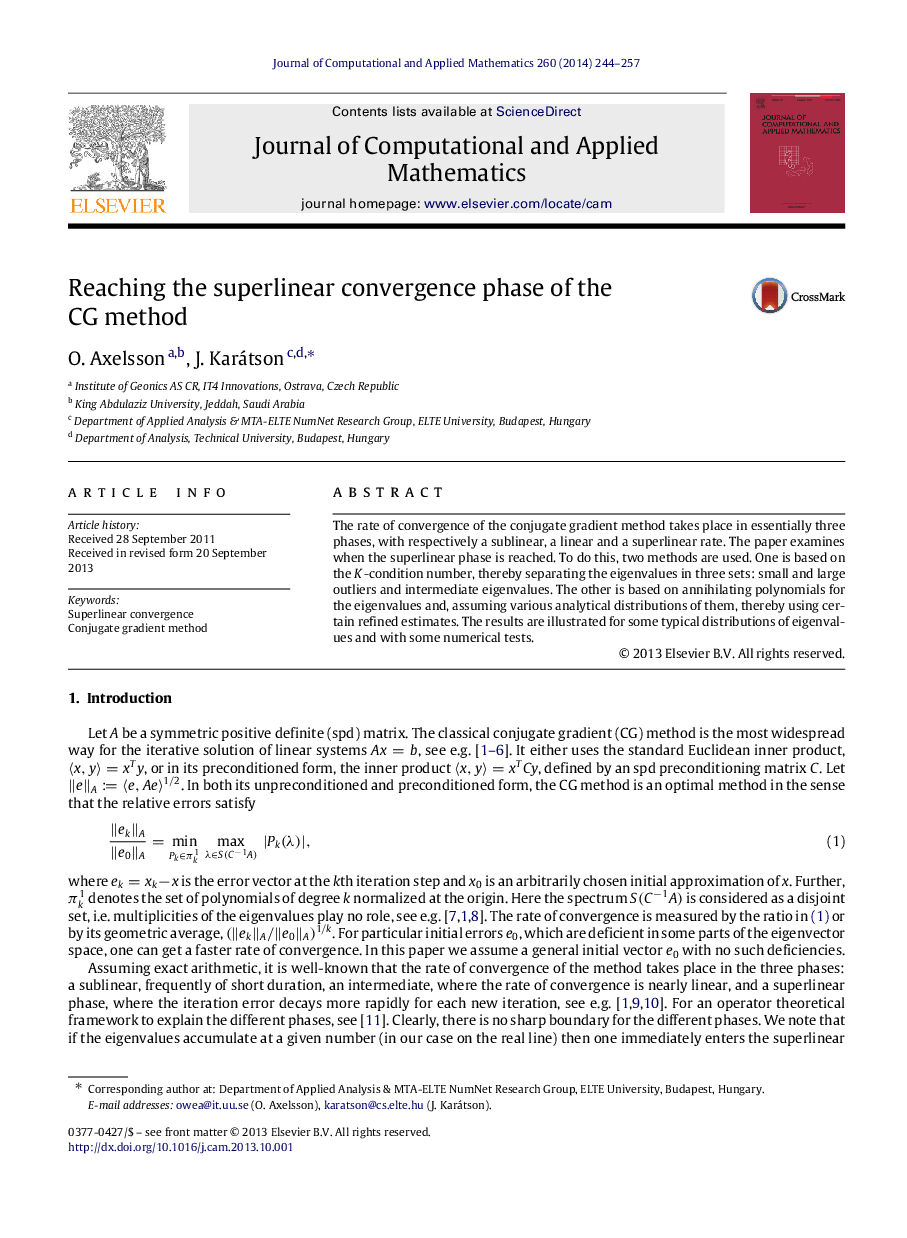| Article ID | Journal | Published Year | Pages | File Type |
|---|---|---|---|---|
| 4639045 | Journal of Computational and Applied Mathematics | 2014 | 14 Pages |
Abstract
The rate of convergence of the conjugate gradient method takes place in essentially three phases, with respectively a sublinear, a linear and a superlinear rate. The paper examines when the superlinear phase is reached. To do this, two methods are used. One is based on the K-condition number, thereby separating the eigenvalues in three sets: small and large outliers and intermediate eigenvalues. The other is based on annihilating polynomials for the eigenvalues and, assuming various analytical distributions of them, thereby using certain refined estimates. The results are illustrated for some typical distributions of eigenvalues and with some numerical tests.
Related Topics
Physical Sciences and Engineering
Mathematics
Applied Mathematics
Authors
O. Axelsson, J. Karátson,
